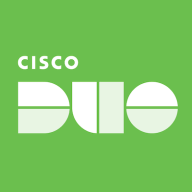

Find out what your peers are saying about Cisco, Yubico, Fortinet and others in Multi-Factor Authentication (MFA).

Cisco Duo is a cloud-based identity security tool offering easy and wide-ranging access protection for users and devices worldwide. It assures identity-first security with clear visibility across multi-cloud, hybrid, and on-premises environments.
Cisco Duo provides robust multi-factor authentication and seamless integration capabilities with existing infrastructures. Appreciated for its stability and speed, it supports distributed workforces by securing VPN access, corporate networks, and cloud services. Duo’s comprehensive identity ecosystem supports easy deployment and management through a single-pane-of-glass management interface. It seamlessly merges with popular platforms like Active Directory and Office 365 across diverse hardware.
What are Cisco Duo’s Essential Features?Cisco Duo finds extensive applications across education, finance, retail, and government sectors by fortifying network and application access security. Organizations leverage it for its MFA capabilities, integrating with ERP systems, ensuring protected connectivity with VPN and cloud-based services, crucial in maintaining secure and efficient operations.
Entrust Identity Essentials provides comprehensive identity solutions to ensure secure and seamless user experiences, designed for enterprises looking to enhance their authentication mechanisms without compromising accessibility or security standards.
Entrust Identity Essentials stands out as a flexible and robust tool for enterprises aiming to improve digital security through practical identity management solutions. It supports a range of use cases such as authentication, access management, and secure communications. This offering allows significant customization tailored to specific needs, although users express a desire for enhanced integration capabilities with external systems. Despite this, Entrust Identity Essentials remains a trusted option for balancing ease of use with stringent security requirements.
What are the key features of Entrust Identity Essentials?Industries like finance and healthcare often implement Entrust Identity Essentials to address specific challenges such as protecting sensitive patient data or securing financial transactions. Its ability to integrate seamlessly with existing systems while enhancing security makes it a strategic choice for these sectors.
We monitor all Multi-Factor Authentication (MFA) reviews to prevent fraudulent reviews and keep review quality high. We do not post reviews by company employees or direct competitors. We validate each review for authenticity via cross-reference with LinkedIn, and personal follow-up with the reviewer when necessary.